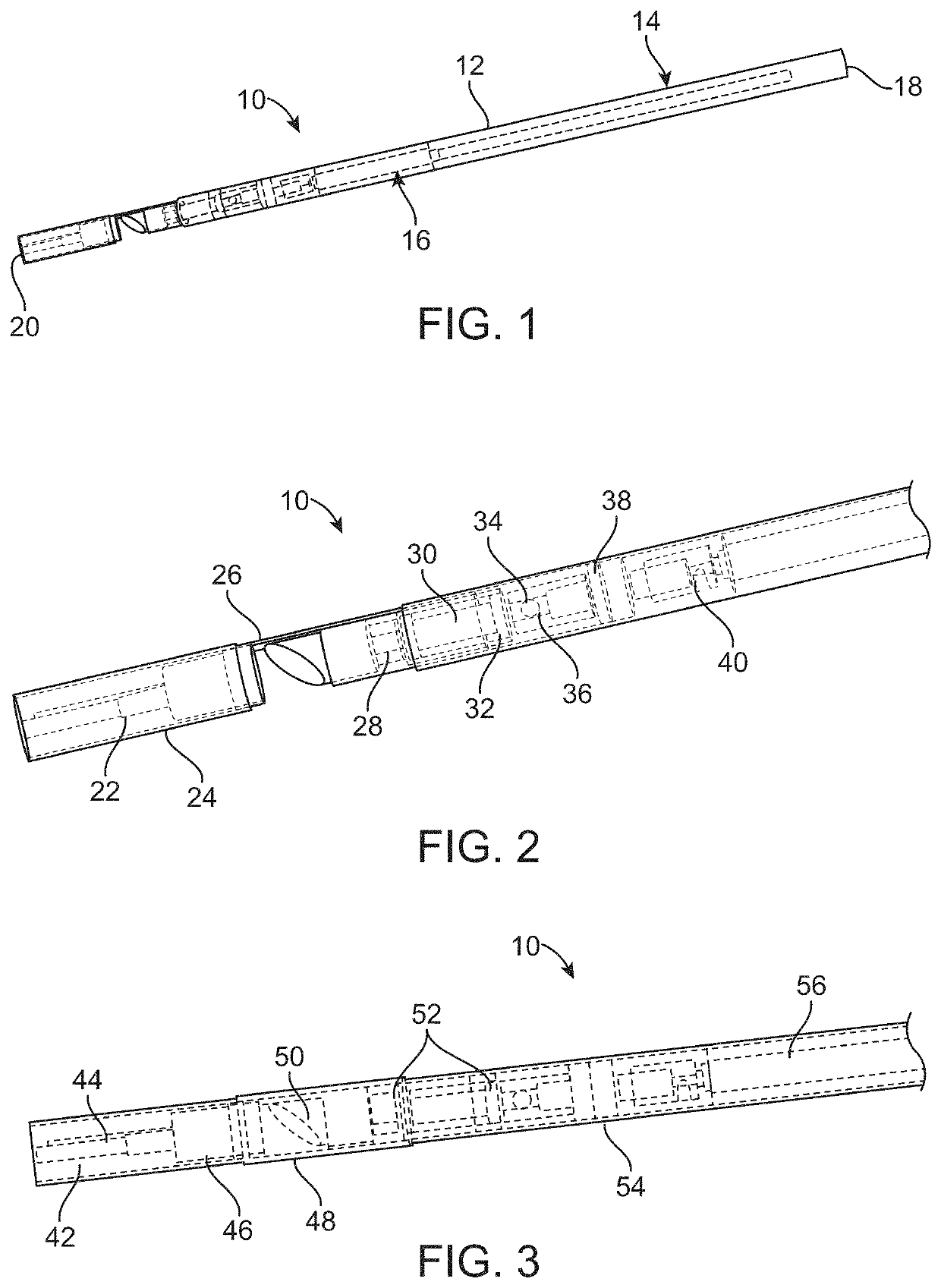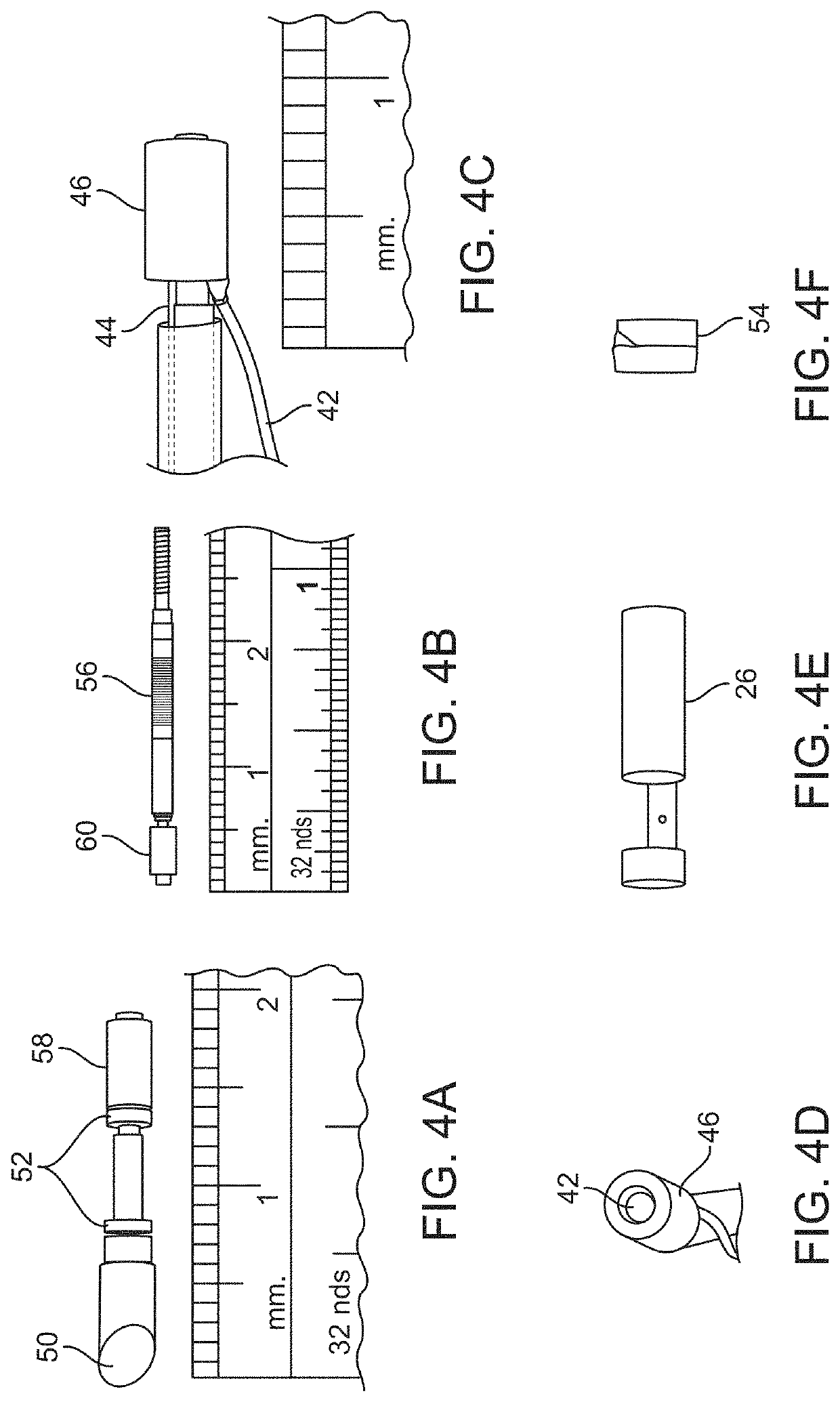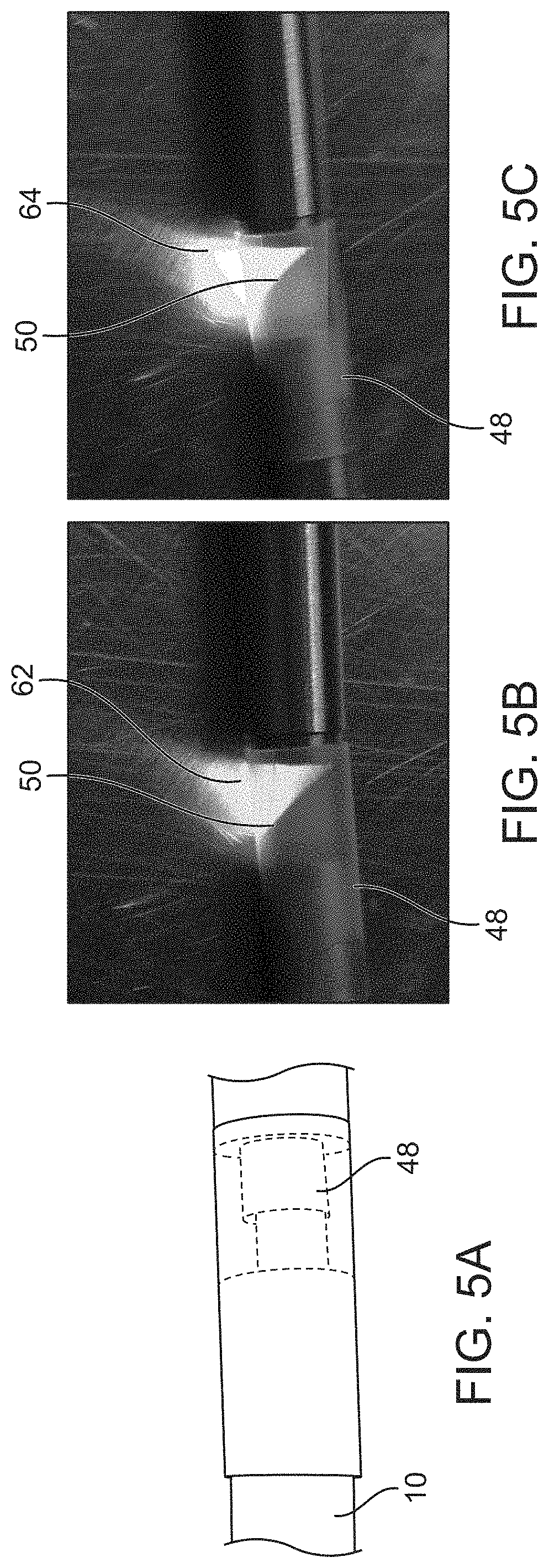Probe for detecting atherosclerosis
a technology for detecting atherosclerosis and probes, applied in the field of medical devices and methods, can solve problems such as difficult detection of coronary atherosclerosis, and achieve the effects of improving the sensitivity and resolution of plaque imaging, and improving atherosclerosis detection and evaluation
- Summary
- Abstract
- Description
- Claims
- Application Information
AI Technical Summary
Benefits of technology
Problems solved by technology
Method used
Image
Examples
Embodiment Construction
[0036]As mentioned above, this disclosure describes a dual-modality, scintillator catheter probe. The term “dual-modality” refers to the two imaging modes of the probe—catheter radionuclide imaging (“CRI”) and photoacoustic tomography (“PAT”). The probe, and the CRI-PAT imaging system of which it is a part, typically (but not necessarily) uses both imaging modalities to help a user evaluate atherosclerotic plaque. Although reference may be made herein to detecting atherosclerotic plaque in coronary arteries, the probe and method for using it may be used to detect atherosclerosis in any artery in a human or animal body, such as but not limited to carotid arteries, peripheral arteries and the like.
[0037]Vulnerable atherosclerotic plaque is composed of a thin fibrous cap, a large lipid pool, and a large number of macrophages. These macrophages uptake an increased amount of 18F-fluorodeoxyglucose (18F-FDG) glucose molecule, compared to normal arterial tissue. The probe device described ...
PUM
 Login to View More
Login to View More Abstract
Description
Claims
Application Information
 Login to View More
Login to View More - R&D
- Intellectual Property
- Life Sciences
- Materials
- Tech Scout
- Unparalleled Data Quality
- Higher Quality Content
- 60% Fewer Hallucinations
Browse by: Latest US Patents, China's latest patents, Technical Efficacy Thesaurus, Application Domain, Technology Topic, Popular Technical Reports.
© 2025 PatSnap. All rights reserved.Legal|Privacy policy|Modern Slavery Act Transparency Statement|Sitemap|About US| Contact US: help@patsnap.com



